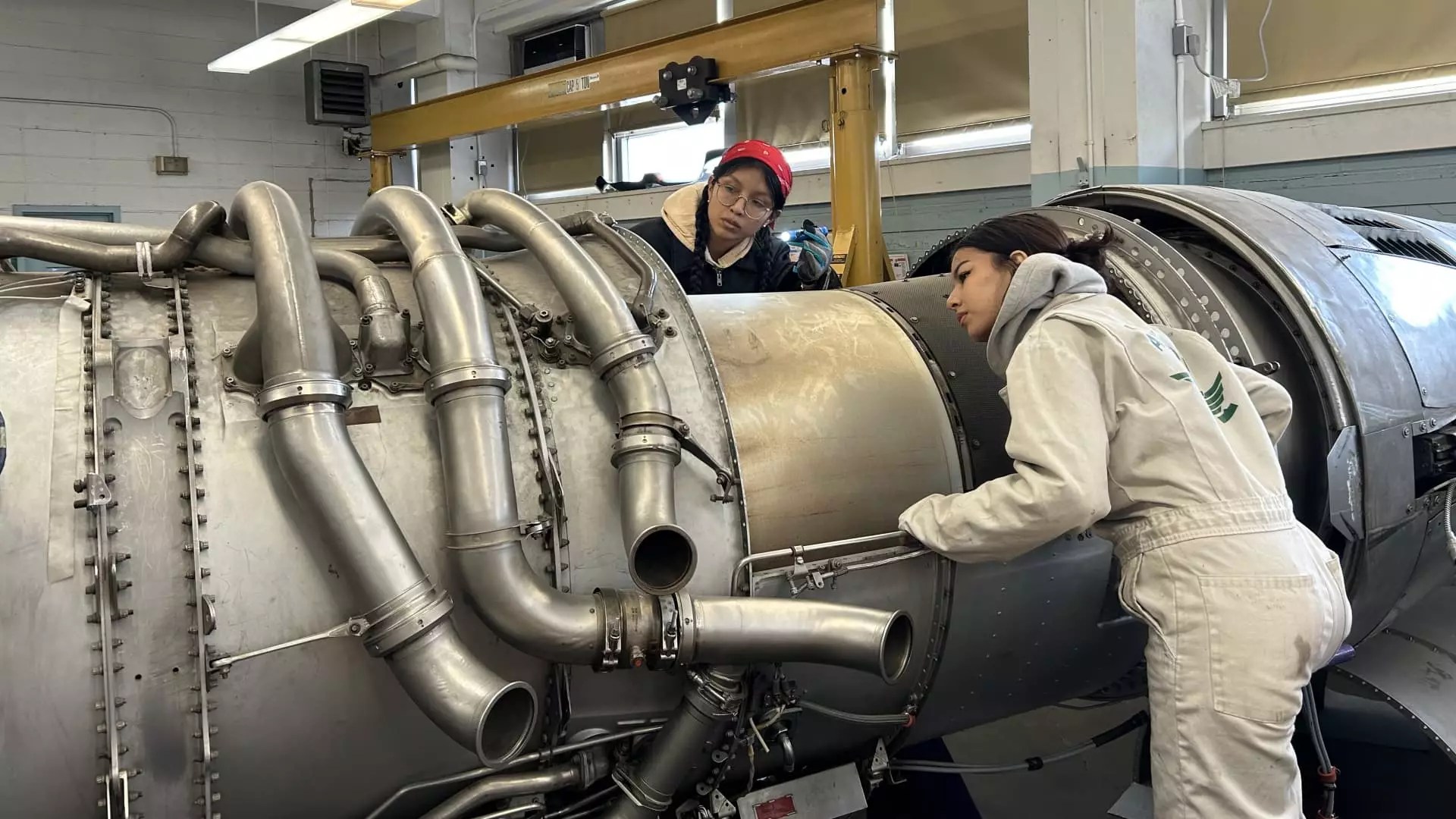The United States aviation sector has reached a critical juncture, caught in a whirlwind of soaring demand and a sheer shortage of skilled labor. President Donald Trump’s intention to revive American manufacturing jobs and bolster technical employment may be well-meaning, but it stands in stark contrast to the troubling reality facing the aviation industry today. With the average age of certified aircraft mechanics hovering around 54, and an alarming 40% over the age of 60, the industry is at risk of a catastrophic workforce shortage. Recent statistics reveal that the sector will face a deficit of 25,000 technicians by 2028. This deficiency threatens the foundation of an industry that is not merely symbolic of American ingenuity but crucial for the ongoing economic recovery post-pandemic.
At the core of this dilemma is an aging workforce steeped in history, many of whom were recruited during the economic booms of the late ’80s and early ’90s. The gradual retirement of these seasoned professionals creates not just a manpower void but also a knowledge gap, which could take years to fill. The aviation industry continues to struggle with enticing younger generations into technical roles despite new initiatives to boost wages and improve working conditions. This predicament illuminates not only an economic issue but also a cultural one, reflecting a broader sentiment about the value of manufacturing jobs in a tech-driven society.
COVID-19: A Wrench in the Works
The global pandemic wreaked havoc on the aviation industry when it pulled the curtain down on an already fragile workforce. As airlines slashed jobs and offered buyouts to retain financial stability, the result was a significant brain drain that could haunt the sector for decades. It’s a cruel irony; just as the industry was gearing itself for an era of promising prospects in aerospace, it was thrust into chaos. The Chief Human Resources Officer at GE Aerospace poignantly noted the losses of talent during this period and emphasized the urgent need for hiring as recovery gained momentum.
Resiliency, however, seems to be a hallmark of the industry. With major manufacturers like GE and its partner Safran stepping up their hiring processes, some light flickers on the horizon. The average salary for aircraft technicians—hovering around $79,140—far exceeds the national median income, while the potential for experienced technicians in major airlines to earn up to $130,000 creates a compelling case for those considering careers in aviation. Yet, this financial allure still struggles against social and cultural perceptions about the worth of such jobs.
Geography and Mobility: A Real-World Obstacle
One cannot overlook another fundamental hurdle in addressing this skills gap: geographic immobility. Experts argue that manufacturing positions require a localized labor market, presenting a challenge in recruitment where industries fluctuate based on demand. It’s not as simple as bringing back jobs that were once offshored; the reality is, there must be a transformation in mindset about what these roles entail. The manufacturing landscape is evolving with new technologies, from precision machining to the use of exotic materials, and yet the perception remains stuck in the past—a myth that these jobs are labor-intensive and low-tech.
Sarah MacLeod, the executive director of the Aeronautical Repair Station Association, underscored the urgency of ramping up wages, as the entire workforce will feel cascading effects from shortages. Her assertion aligns with the sentiment that traditional educational routes are being reconsidered by students, as seen in the choices of young talent exploring FAA licenses over the four-year college degree model. This reassessment points towards a crucial cultural shift, wherein technical skills are becoming more appealing—not in competition with college but as a complementary route to success.
Bridging the Gap with Education and Awareness
Educational institutions play a vital role in the industry’s revival. Programs like the one offered at Aviation High School in Queens are paving the way for students to explore careers in aviation maintenance. The growing interest is evident as the school sees not just a surge in applications, but also recognition that careers in aerospace are no longer just for the mechanically inclined. It’s a high-tech environment requiring precision and advanced technical skills, traits that resonate with the younger workforce today.
Moreover, the collaborative efforts between airlines and educational entities to engage students at a younger age speak volumes about the industry’s commitment to evolving the image of aviation careers. American Airlines is not just targeting high schools but engaging with junior high students—a strategic initiative that may ignite early interest among potential technicians. An investment in awareness and education could very well define the future trajectory of the aviation workforce.
The challenges are undeniable; however, if the industry harnesses the creative potential of young minds and adapts to the evolving technological landscape, it might very well transform a looming crisis into an opportunity. Success will hinge not only on financial incentives but also on reshaping the narrative surrounding skilled labor in manufacturing and, specifically, aviation.

